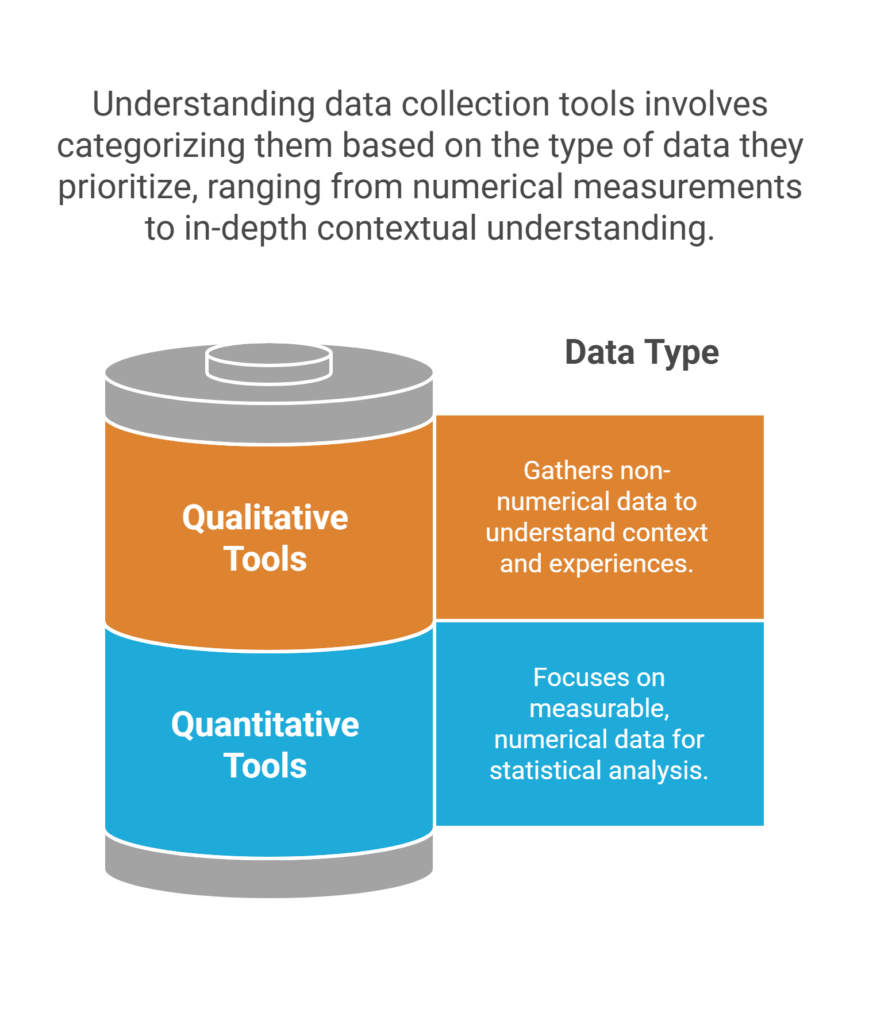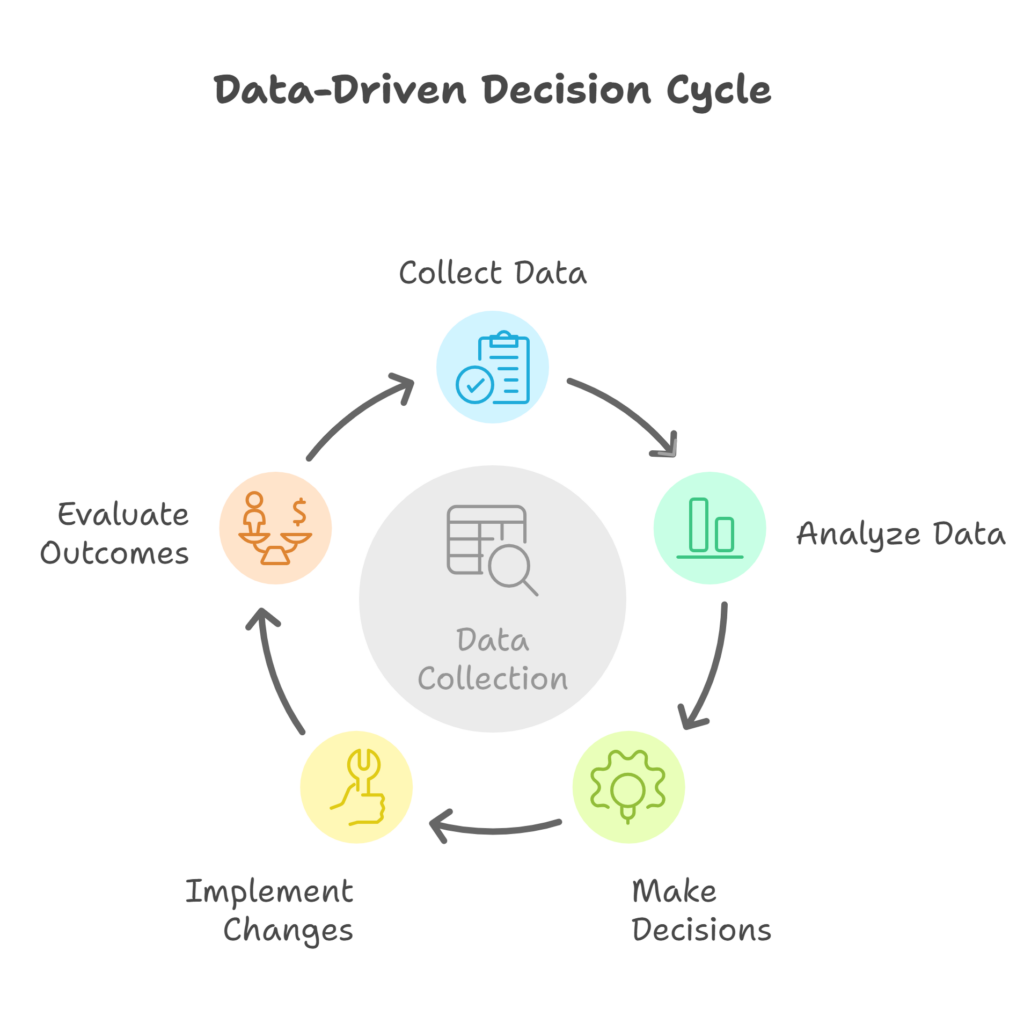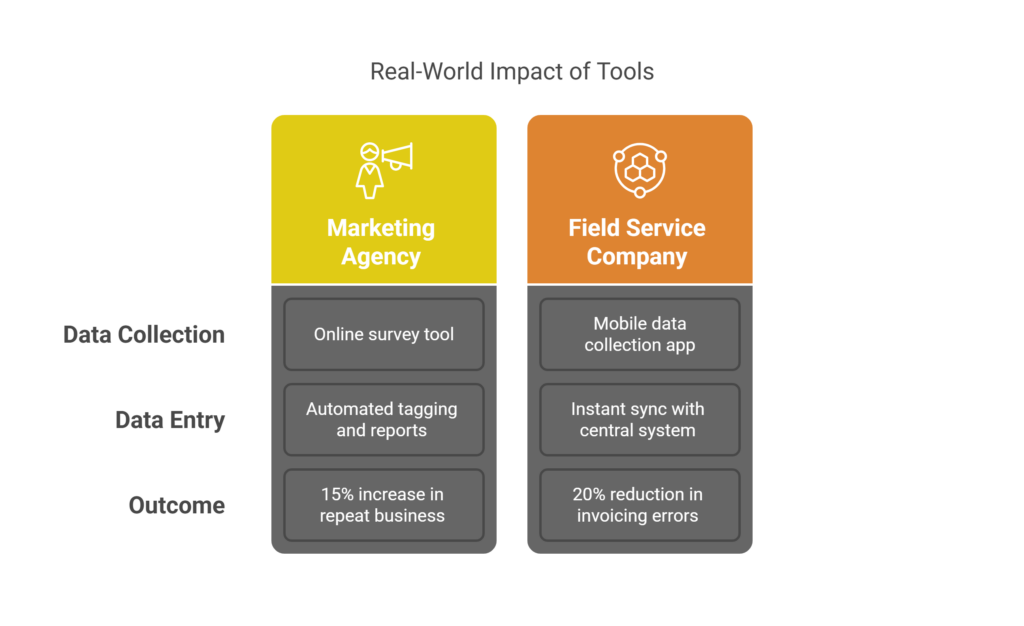Introduction
Oops! 😬 Those error-prone spreadsheets might be costing your business more than you think – potentially millions in lost opportunities and skewed strategies. It’s surprising how many leaders overlook the massive impact their choice of data collection tools can have. A single wobbly data point can send carefully crafted plans tumbling down.
If you’re aiming for decisions built on solid facts, not just hopeful guesses, you need something better than just “a way to get data.” You need tools that mesh perfectly with your objectives, your methods, and how your team actually works. We’ll walk through how to pick, apply, and really get value from the right data collection tools, showing how modern platforms (like the ones Nektar provides) are genuinely changing the game for businesses and researchers.
Here’s the scoop you need right now:
- Getting data collection right means getting actionable insights instead of costly wrong turns. ✅
- Smart, tech-powered tools save precious hours and slash the errors that can wreck your research or operations.
- Understanding the basics – the different types, methods, and typical hurdles – empowers you to confidently select the best tools and partners (like Nektar!) for what you need to achieve.
What Are Data Collection Tools?
Think of data collection tools as your super-organized assistants 🕵️♀️ for gathering information. They’re the systems and instruments – software, apps, structured interview guides, observation checklists – designed specifically to collect, measure, and analyze data accurately and consistently. This is leagues beyond jotting notes on scraps of paper or asking questions haphazardly; these tools introduce vital structure and reliability into the process, forming the bedrock of sound research, effective business strategy, and meeting compliance needs.
These tools aren’t confined to just fancy software suites. They operate across various settings. You might use a sophisticated web platform to send out customer satisfaction surveys globally 🌍, or employ a dedicated mobile app for field researchers logging environmental data 🌳. Equally, a well-designed paper questionnaire for in-person interviews or a standardized logbook for tracking factory output still count as data collection tools, especially when part of a systematic approach. The key is their purpose: structured, repeatable information gathering.
“Data collection is the process of gathering, measuring, and analyzing accurate data.” – Simplilearn
Why Are Data Collection Tools Important?
Let’s be blunt: sloppy data collection is risky business. When your methods are weak or your tools aren’t up to snuff, you risk losing data integrity – meaning the information you gather isn’t trustworthy. This leads to wasted time and money chasing flawed insights, developing ineffective strategies, and potentially making damaging decisions based on bad information. Imagine building a house on a shaky foundation; that’s what happens when your data collection is unreliable. 🏚️
On the flip side, using robust data collection tools brings huge advantages. They foster better collaboration among team members, ensuring everyone follows the same process. They dramatically boost data accuracy by minimizing human error and standardizing inputs. This saves valuable resources – less time spent cleaning messy data, more time analyzing meaningful results. Plus, well-collected data is more likely to be useful down the road for future analysis or longitudinal studies. It’s about building a solid foundation for knowledge. 💪
“Data collection tools can protect the integrity of your research, allowing you to identify and resolve discrepancies before drawing conclusions.” – Indeed
Types of Data Collection Tools
Data collection tools generally fall into two main camps: qualitative and quantitative. Quantitative tools focus on numbers and measurable data – think surveys with rating scales (like 1-5 stars ⭐), website analytics tracking visitor counts, or sensors recording temperature. They answer questions like “how many?” or “how often?”. The goal here is often statistical analysis and identifying broad patterns.
Qualitative tools, conversely, gather non-numerical information, aiming to understand context, opinions, and experiences. Examples include open-ended interview questions, notes from focus group discussions 🗣️, or detailed observational records of behavior. These tools help answer “why?” and “how?”. They provide depth and nuance that numbers alone might miss. Often, the most powerful insights come from combining both types.

Within these categories, you’ll find various forms. Surveys (online or paper), structured interviews (face-to-face or remote), focus group moderation guides, and systematic observation checklists are common. Increasingly, we see sophisticated digital tools like specialized software platforms, mobile data entry apps 📱, web scraping tools, and APIs that automatically pull data from other systems. While traditional methods like paper forms still have their place, digital tools offer speed, scale, and automation advantages.
“Some of the primary data-collection methods covered below are quantitative… Others are qualitative… There can also be crossover between the two methods.” – Jotform
Key Features to Look For in Data Collection Tools
When you’re choosing a data collection tool, don’t just grab the first one you see! Look for key features that match your needs. Usability is huge – if your team finds the tool confusing or clunky, they won’t use it effectively (or at all!). 👎 Good tools are intuitive. Data security is non-negotiable; ensure the tool has strong measures to protect sensitive information, especially if dealing with personal data. Integration capabilities are also vital – can the tool easily connect with your CRM, analytics software, or other systems you already use? This avoids data silos. Built-in analytics or reporting features save time, allowing you to quickly visualize and understand the collected data. Automation features, like sending survey reminders or auto-populating fields, reduce manual work and errors.
Beyond the basics, consider scalability and customization. Will the tool grow with your organization or project? Can it handle more users, more data, or more complex workflows as needed? 🤔 Customization is important too. Can you tailor forms, reports, or dashboards to your unique requirements? A tool that forces you into a rigid structure might not work long-term. The best tools offer flexibility to adapt to your specific situation, ensuring they remain valuable as your needs change.
“Cloud-based data collection tools are used… to help the workflow and data collection process. This platform makes it easier and more effective to analyze essential data.” – Sprintzeal
Popular Data Collection Tools and Methods
You’ve got a wide array of tools and methods at your disposal. Online survey platforms (like SurveyMonkey, Google Forms, Typeform) are incredibly popular for gathering feedback or opinions quickly and widely. For more in-depth qualitative insights, researchers often use audio/video recorders 🎙️ during interviews or focus groups, sometimes paired with transcription software. Observation studies might use specialized software or simple checklists to record behaviors systematically. Mobile apps are fantastic for field data collection, allowing researchers or staff to input data directly on-site, often with GPS tagging or photo capture capabilities 📸.
Each method has its strengths and weaknesses. Online surveys are cost-effective and scalable but can suffer from low response rates or lack depth. Face-to-face interviews allow for rich, detailed responses and clarification but are time-consuming and expensive. Direct observation provides firsthand data on behavior but can be influenced by the observer’s presence (the Hawthorne effect). Mobile apps streamline field data entry but require suitable devices and connectivity.
The key is matching the tool and method to your specific goal. If you need quick feedback from hundreds of customers, an online survey makes sense. If you’re studying complex social interactions, direct observation or in-depth interviews might be better. Need sales reps to capture meeting notes consistently in your CRM? An integrated data collection tool built for sales workflows, like those offered by Nektar, is ideal. The context and objective dictate the best approach. 👍
“There are several tools available for primary data collection. The methods range from traditional and simple — such as a face-to-face interview — to more sophisticated ways to collect and analyze data.” – Jotform
Digital vs. Traditional Data Collection Tools
The big matchup: digital tools (cloud-based software, mobile apps, automated feeds) versus traditional ones (paper forms, manual logs, face-to-face tallies 📝). Digital tools generally win on efficiency and scale. Data entry is often immediate, reducing transcription errors. Distribution (like online surveys) can reach vast audiences instantly. Automation features can handle tasks like data validation or reminders, saving significant time. Cloud platforms allow for real-time collaboration and access from anywhere.
However, traditional methods aren’t obsolete. Paper forms can be essential in areas with limited internet connectivity or for populations less comfortable with technology. Sometimes, the personal touch of an in-person interview yields richer qualitative data than an online form. Traditional methods can also feel less intrusive in certain contexts. The downsides include slower processing, higher risk of manual errors during data entry, physical storage challenges, and difficulties in real-time analysis or sharing. The cost factor can vary; while digital tools might have subscription fees, traditional methods involve printing, distribution, and manual data entry costs, which can add up significantly for large projects. 💰
“The rise of online resources, electronic media, and the internet has made it easier to gather data through digital tools.” – Sprintzeal
How Data Collection Tools Drive Better Decision-Making
High-quality, timely data collected through the right tools is the fuel for smart decisions. 🚀 When organizations can reliably gather accurate information, they can spot emerging market trends before competitors, measure the true impact of their marketing campaigns or operational changes, and uncover unmet customer needs that lead to new product or service opportunities. It replaces guesswork and gut feelings with evidence-based strategy.
Think about it: A retail business using point-of-sale data collection tools can analyze purchasing patterns to optimize inventory and promotions. A healthcare provider using patient feedback surveys 🩺 identifies areas to improve the patient experience. Researchers using observational tools track the effectiveness of a new teaching method in classrooms. In each case, the systematic collection of relevant data empowers stakeholders to understand what’s working, what isn’t, and where to focus their efforts for better outcomes. It connects actions directly to results.

“Data collection allows businesses to gather information about their customers’ preferences, purchasing behaviour, and demographics. By analysing this data, businesses can identify trends and patterns, enabling them to tailor their products, services, and marketing strategies to better meet customer needs.” – Future Processing
Challenges in Data Collection and How to Overcome Them
Even with the best intentions, data collection isn’t always smooth sailing. Common hurdles pop up. Maintaining data quality is a big one – incomplete entries, typos, or inconsistent formats can pollute your dataset. User error is always a factor; people might misunderstand questions or input data incorrectly. 🤦♀️ Ensuring data privacy and security, especially with sensitive information, is critical and often complex due to regulations like GDPR or CCPA. Integrating new collection tools with existing systems (like your CRM or database) can also be tricky, leading to data silos if not handled properly.
So, how do you tackle these? Clear, well-documented protocols and training for anyone involved in data collection are essential. Define your data points clearly. Conduct regular data audits to spot and correct errors early. Choose tools with built-in validation rules to catch mistakes upon entry. For integration woes and streamlining complex workflows, specialized platforms designed for specific functions, like Nektar for sales data automation, can make a world of difference. They are built precisely to overcome the integration and data consistency challenges that generic tools might struggle with. Investing in the right technology partner is often the best solution. ✨
“Data collection can help improve services, understand consumer needs, refine business strategies, grow and retain customers, and even sell the data as second-party data to other businesses at a profit.” – Emeritus
Nektar: Streamlining Data Collection for Modern Teams
Speaking of specialized platforms, let’s talk about Nektar. If inconsistent sales data, manual CRM updates, and disconnected tools are causing headaches 🤯, Nektar is designed to be the remedy. It focuses specifically on automating the capture and enrichment of crucial business activity data directly into your CRM, ensuring your team has reliable information without the soul-crushing manual entry. Think less time logging data, more time acting on it.
Nektar shines by tackling those common data collection pain points head-on. Its automation capabilities drastically reduce the potential for human error that plagues manual data entry. It offers seamless integration with popular CRMs and sales tools, breaking down those frustrating data silos. This means your reporting is centralized and based on complete, accurate information. Collaboration improves because everyone is working from the same reliable dataset. For sales teams especially, Nektar transforms data collection from a chore into an automated background process, delivering trustworthy insights for forecasting and strategy. 🎯 Check out Nektar.io to see how it works.
Integrations and Automation: The New Frontier
In today’s connected work environment, standalone data collection tools just don’t cut it anymore. The real power comes from integrations and automation. API (Application Programming Interface) support is crucial – it allows your data collection tool to ‘talk’ to other software you use, like your Customer Relationship Management (CRM) system, marketing automation platform, or business intelligence tools. 🤝 This seamless flow of information prevents duplicate data entry, ensures consistency across platforms, and provides a holistic view of your operations or research.
Automation takes this a step further. Imagine automatically logging sales call details into your CRM, syncing survey responses to customer profiles, or triggering follow-up actions based on collected data – all without manual intervention. This saves incredible amounts of time, minimizes errors, and ensures data is captured promptly. Platforms like Nektar excel here, automating the capture of sales activity data from email, calendar, and other sources directly into the CRM. This frees up teams to focus on higher-value tasks, confident that the underlying data is accurate and up-to-date. 🤖⚡️
“Third-party integrations can send or receive efficient data collection systems like Microsoft, Google, Amazon, Zapier, Dropbox, a custom API, etc.” – Sprintzeal
Best Practices for Implementing Data Collection Tools
Rolling out a new data collection tool requires more than just buying software. To make it successful, invest time in training your staff. Ensure everyone understands *why* the data is being collected, *how* to use the tool correctly, and the importance of accuracy. Clearly define the key metrics you need to collect – don’t gather data just for the sake of it. Focus on information that directly informs your goals. 🎯
Regularly evaluate your chosen tools and processes. Are they still meeting your needs? Is there room for improvement? Collect feedback from users – they often have valuable insights into usability and potential issues. Crucially, always keep regulatory compliance and data privacy top of mind. Understand requirements like GDPR, HIPAA, or CCPA if applicable, and ensure your tools and practices adhere to them. This includes secure data storage, clear consent procedures, and respecting user rights. 👍
“Modifications are often adopted with the goal of making sure questions are correct, fair, valid, and reliable.” – CITE Journal
Case Studies: Effective Use of Data Collection Tools
Let’s look at real-world impact. A marketing agency implemented an online survey tool integrated with their email platform. This allowed them to quickly gather client feedback after project completion, automatically tag responses, and generate reports showing satisfaction trends. The result? Faster identification of areas for service improvement and demonstrable client happiness metrics used in pitches, contributing to a 15% increase in repeat business. Check out more Case Studies. 📈
Consider a field service company that equipped its technicians with a mobile data collection app. Instead of filling out paper forms on-site, technicians entered job details, parts used, and customer signatures directly into the app, which synced instantly with their central system. This eliminated delays from manual data entry, reduced invoicing errors by 20%, and provided managers with real-time visibility into job status, improving scheduling efficiency significantly. These examples show how the *right* tool, implemented well, delivers tangible benefits. ✅

Frequently Asked Questions About Data Collection Tools
- What are the main types of data collection tools?
Broadly, they split into quantitative (collecting numerical, measurable data like surveys with scales, analytics) and qualitative (gathering non-numerical insights like interview transcripts, observation notes). They also exist as digital tools (software, apps, APIs) offering automation and scale, and traditional tools (paper forms, manual logs) which can be useful in specific offline contexts. Many projects benefit from using a mix. - How do I choose the right data collection tool?
Start with your goals: what specific information do you need and why? Consider the type of data (quantitative/qualitative). Evaluate usability – will your team actually use it? Check integration capabilities – does it connect with your existing systems (like CRM)? Assess security features and ensure scalability for future growth. Finally, match the tool to your budget and technical resources. 🤓 - Are online data collection tools secure?
Reputable online tools prioritize security, but responsibility is shared. Look for tools that offer encryption (both in transit and at rest), comply with relevant data privacy regulations (like GDPR, CCPA), provide role-based access controls, and have clear security features and policies. Always review the vendor’s security practices and ensure your own internal processes for handling the collected data are also secure. 🔒 - Can data collection tools be customized for unique workflows?
Many modern data collection tools offer customization options. This might range from tailoring survey questions and form layouts to configuring complex workflows and reporting dashboards. Tools with robust API support offer the highest degree of flexibility, allowing developers to build custom integrations and connect the tool seamlessly into unique business processes. Platforms like Nektar are specifically designed with integration and workflow automation in mind. ⚙️ - What common challenges do organizations face with data collection tools?
Key challenges include ensuring data quality (avoiding errors, inconsistencies), overcoming user resistance or lack of training, managing data privacy and security compliance, and integrating the tool effectively with other business systems to avoid data silos. Choosing user-friendly tools, providing thorough training, establishing clear protocols, and prioritizing platforms with strong integration capabilities (like Nektar) helps mitigate these issues. 👍
Conclusion
Picking the right data collection tools isn’t just an IT decision; it’s a strategic one that shapes the quality of your insights and the effectiveness of your actions. When getting it right matters – when accuracy, efficiency, and data-backed decisions are paramount – adopting a robust solution like Nektar helps your organization sidestep costly errors and gain a competitive edge.
Ready to swap out those clunky spreadsheets and disjointed processes for a streamlined, integrated approach? See how Nektar can centralize your crucial business data collection, make collaboration easier, and deliver results you can truly count on. Book a free demo with Nektar today—and make sure every decision starts with dependable data. 🚀
Key Takeaways:
- Smart choices in data collection tools lead to better accuracy, fewer mistakes, and smarter business moves. ✅
- Modern platforms boost teamwork, automate tedious tasks, and connect smoothly with your other tech tools.
- Nektar’s solutions directly address the headaches of manual processes and scattered data, setting your team up for quicker, more intelligent results. ✨



